Two particles (A) and (B) are connected by a rigid rod AB. The rod slides along perpendicular rails as shown here. The velocity of (A) to the left is 10m/s.
What is the velocity of (B) ange α=30∘.
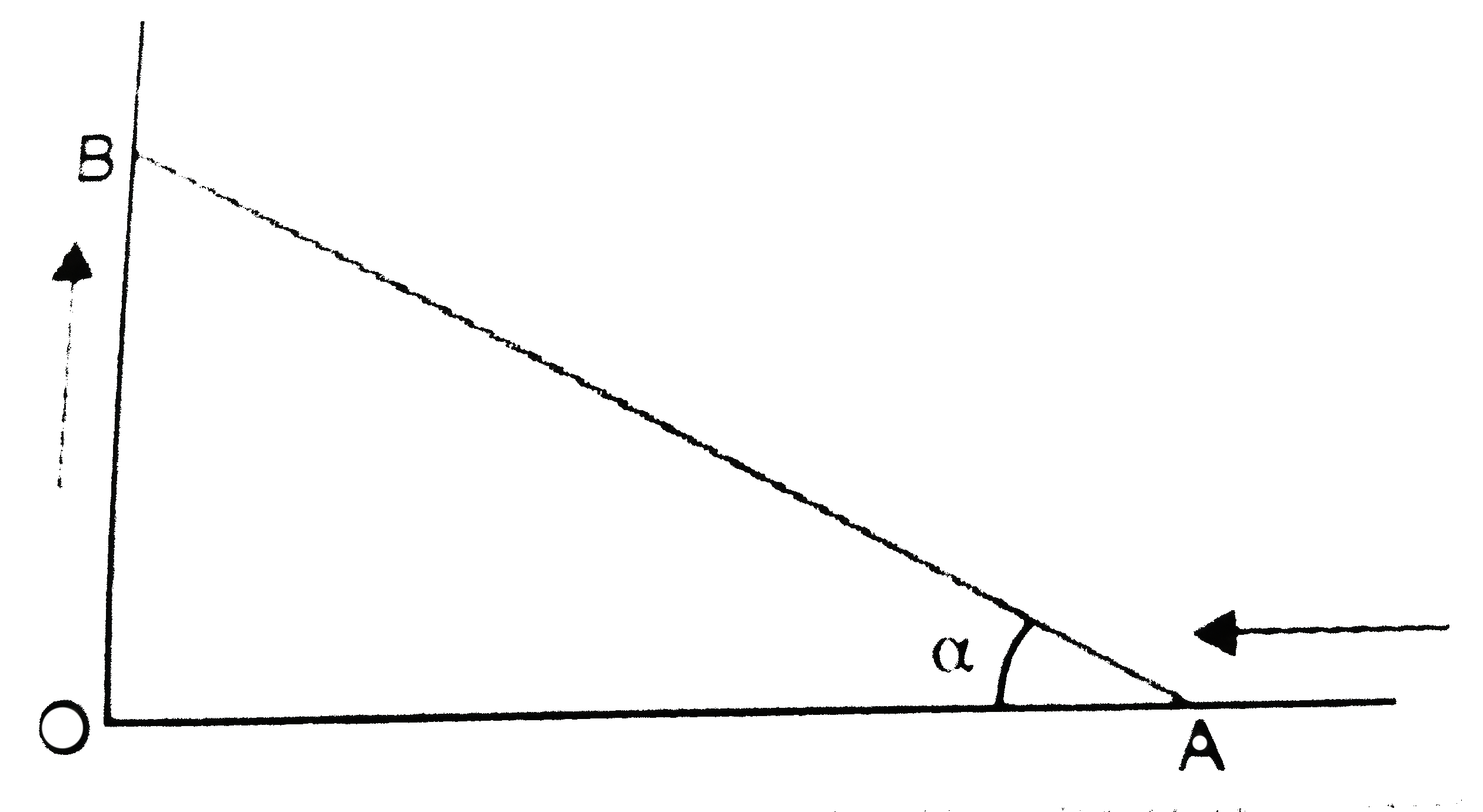 .
.
(a) 9.8m/s
(b) 10m/s
( 5.8 m//s
( 17.3m/s
The correct Answer is:D
Let particle (B) move upwards with velocity (v). At an instant. Let OA=x and OB=y,Ab=l. Then ltbRgt X2+y2=l∘
Differentating it with time (t) we have
2x(dx0dt+2ydydt=0
dydt=−xydxdt=−dx/dttan302=−10×√3
=−17.32m/s.
Topper's Solved these Questions
- BOOK - PRADEEPCHAPTER - KINEMATICSEXERCISE - 4 NCERT multiple Choice10videos
KINEMATICS
- BOOK - PRADEEPCHAPTER - KINEMATICSEXERCISE - 4 NCERT Integer type4videos
KINEMATICS
- BOOK - PRADEEPCHAPTER - KINEMATICSEXERCISE - 2 NCERT multiple15videos
KINEMATICS
- BOOK - PRADEEPCHAPTER - GRAVIATIONEXERCISE - Assertion-Reason Type Questions19videos
GRAVIATION
- BOOK - PRADEEPCHAPTER - LAWS OF MOTIONEXERCISE - Assertion- Reason Type Questions17videos
LAWS OF MOTION
Similar Questions
Two particles each of mass M are connected by a massless rod. The rod is lying on the smooth horizontal surface. If one of the particle is given an impulse MV as shown in the figure then angular velocity of the system would be:
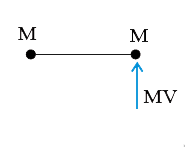 View Solution
View SolutionTwo particles (A and B) of masses m and 2m are joined by a light rigid rod of length L. The system lies on a smooth horizontal table. The particle (A) of mass m is given a sharp impulse so that it acquires a velocity u perpendicular to the rod. Calculate maximum speed of particle B during subsequent motion. By what angle θ will the rod rotate by the time the speed of particle B become maximum for the first time ?
 View Solution
View Solution
Knowledge Check
- Question 1 - Select One
Two particles A and B are connected by a rigid rod AB. The rod slides along perpendicular rails as shown here. The velocity of A to the left is 10 m/s . What is the velocity of B when angle α=60∘ ?
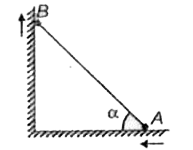 A10 m/sB9.8 m/sC5.8 m/sD17.8 m/s
A10 m/sB9.8 m/sC5.8 m/sD17.8 m/s - Question 2 - Select One
Two particles A and B connected by a rigid rod AB. The rod slides along two perpendicular rails as shown. The velocity of A to the left is 10 m/s. What is the velocity of B, when angle θ is 37∘ ?
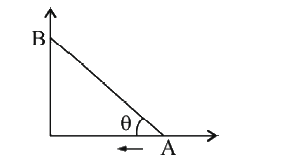 A5.8m/sB9.8m/sC11.2m/sD13.3m/s
A5.8m/sB9.8m/sC11.2m/sD13.3m/s - Question 3 - Select One
A rod of length L is sliding on a frictionless surface as shown in the figure. Velocity of end A is 4m/s along the wall. Find the velocity of end B, when end B makes 30∘ with wall PQ.
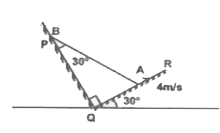 A8m/sB2√3m/sC4√3m/sD4√3m/s
A8m/sB2√3m/sC4√3m/sD4√3m/s
Two particles of masses m1 and m2 are connected with a rigid rod of length l. If a force F acts perpendicular to the rod then (a1&a2 are instantaneous of m1&m2)
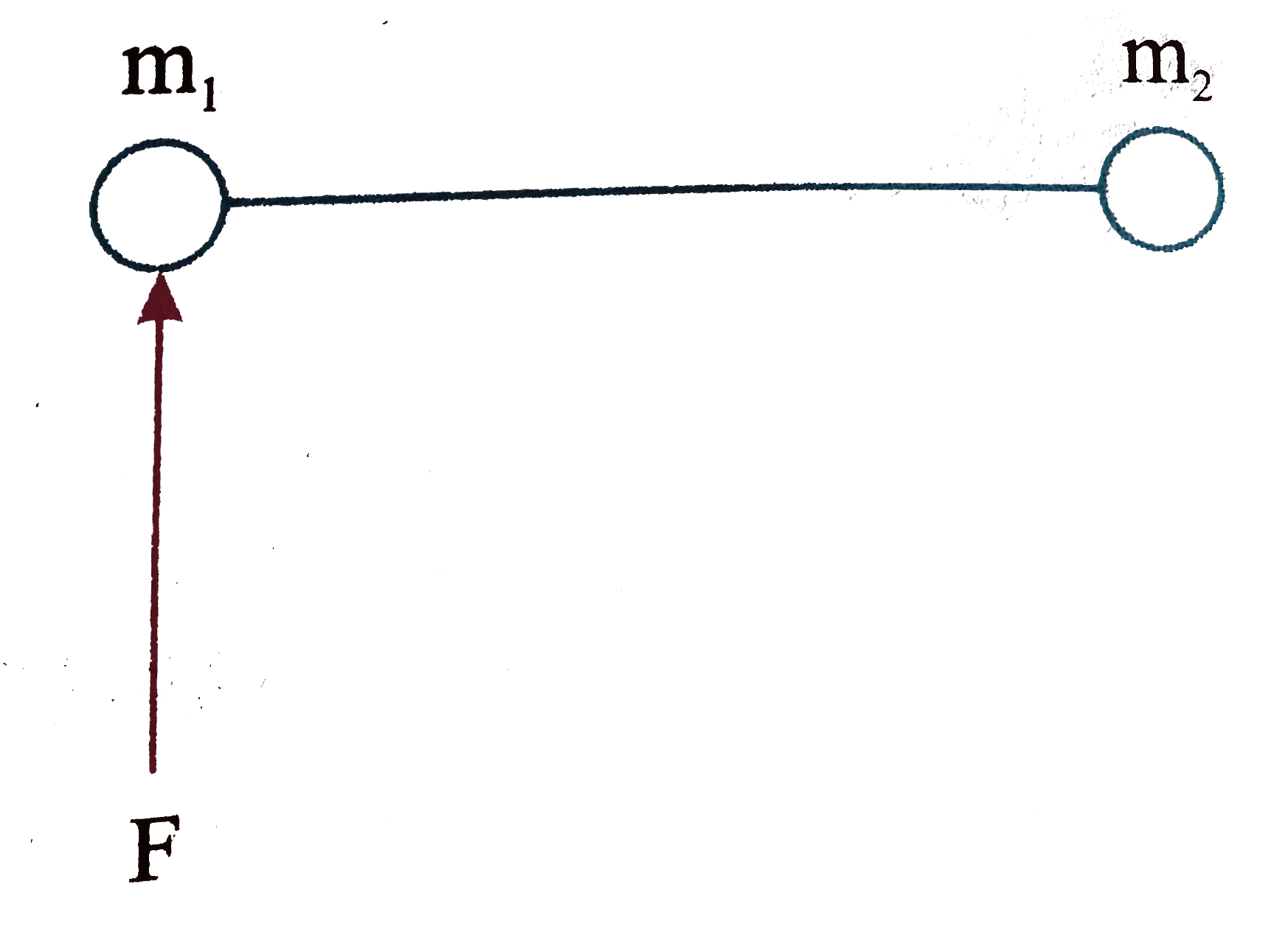 View Solution
View SolutionTwo particles of equal mass m at A and B are connected by a rigid light rod AB lying on a smooth horizontal table. An impulse J is applied at A in the plane of the table and perpendicular at AB. Then the velocity of particle at A is :
View SolutionTwo particle of equal mass m at A and B are connected by a rigid light rod AB lying on a smooth horizontal table. An impulse J is applied at A in the plane of the table and perpendicular at AB. The velocity of particle at A is
View SolutionTwo particles connected by a rigid light rod AB, lying on a smooth horizontal table. An impulse J is applied at A in the plane of thetable and perpendicular at AB. Then the velocity of particle at A is
View SolutionConsider two cars moving perpendicular to each other as shown. Initially distance between 100m. Velocity of A is 10√3 m/s and velocity of B is 10m/s. Then
 View Solution
View Solution

